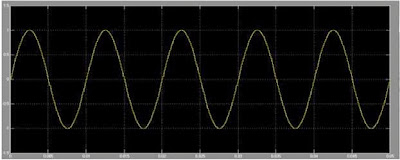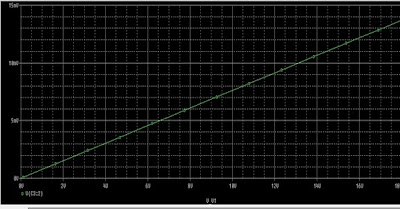Automatic Unmanned Railway Gate Control System
1. AIM:
The
aim of this project is to Automate unmanned railway gate using 8051
microcontroller.
2. ABSTRACT:
The
aim of this project is to Automate unmanned railway gate using
microcontrollers. The objective of this project is to manage the control system
of railway gate using the microcontroller. When train arrives at the sensing
point alarm is triggered at the railway crossing point so that the people get
intimation that gate is going to be closed. Then the control system activates
and closes the gate on either side of the track. Once the train crosses the
other end control system automatically lifts the gate. For mechanical operation
of the gates stepper motors are employed. Here we are using embedded controller
built around the 8051 family (AT89C52) for the control according to the data
pattern produced at the input port of the micro controller, the appropriate selected
action will be taken. The software program is written, by using the KEIL micro
vision environment. The program written is then converted in HEX code after
simulation and burned on to microcontroller using FLASH micro vision.
3.
APPROACH:
Present project is designed using 8051 microcontroller to avoid
railway accidents happening at unattended railway gates, if implemented in
spirit. This project utilizes two powerful IR transmitters and two receivers;
one pair of transmitter and receiver is fixed at upside (from where the train
comes) at a level higher than a human being in exact alignment and similarly
the other pair is fixed at down side of the train direction. Sensor activation
time is so adjusted by calculating the time taken at a certain speed to cross
at least one compartment of standard minimum size of the Indian railway. We
have considered 5 seconds for this project. Sensors are fixed at 1km on both
sides of the gate. We call the sensor along the train direction as ‘foreside
sensor’ and the other as ‘after side sensor’. When foreside receiver gets
activated, the gate motor is turned on in one direction and the gate is closed
and stays closed until the train crosses the gate and reaches aft side sensors.
When aft side receiver gets activated motor turns in opposite direction and
gate opens and motor stops. Buzzer will immediately sound at the fore side
receiver activation and gate will close after 5 seconds, so giving time to
drivers to clear gate area in order to avoid trapping between the gates and
stop sound after the train has crossed.
4. COMPONENTS:
1.
8051
microcontroller
2.
IR
Transmitter
3.
IR
Receiver
4.
Stepper
Motor Circuit
Ø
IR CIRCUITS
This
circuit has two stages: a transmitter unit and a receiver unit. The transmitter
unit consists of an infrared LED and its associated circuitry.
Ø
IR TRANSMITTER
The
IR LED emitting infrared light is put on in the transmitting unit. To generate
IR signal, 555 IC based astable multivibrator is used. Infrared LED is driven through
transistor BC 548. IC 555 is used to construct an astable multivibrator which
has two quasi-stable states. It generates
a square wave of frequency 38 kHz and amplitude 5 Volts. It is required to
switch ‘ON’ the IR LED.
Ø
IR RECEIVER
The
receiver unit consists of a sensor and its associated circuitry. In receiver section, the first part is a
sensor, which detects IR pulses transmitted by IR-LED. Whenever a train crosses
the sensor, the output of IR sensor momentarily transits through a low state.
As a result the monostable is triggered and a short pulse is applied to the
port pin of the 8051 microcontroller. On receiving a pulse from the sensor
circuit, the controller activates the circuitry required for closing and
opening of the gates and for track switching.
Ø STEP MOTOR
Step
motors convert electrical energy into precise mechanical motion. These motors
rotate a specific incremental distance per each step. The number of steps
executed controls the degree of rotation of the motor’s shaft. This characteristic
makes step motors excellent for positioning applications.
Step
motors can be very accurately controlled in terms of how far and how fast they
will rotate. The number of steps the motor executes is equal to the number of
pulse commands it is given. A step motor will rotate a distance and at a rate
that is proportional to the number and frequency of its pulse commands.
5. CODE:
org 000h
mov p1,#00h
mov p0,#00h
mov p2,#0ffh
mov p3,#0ffh
main :
lcall checkswitch1
lcall checkswitch2
sjmp main
checkswitch1:
off:
mov a,p2
xrl a,#0ffh
cjne a,#01h, off
lcall switchon
ret
switchon:
mov a,#01h
mov p0,a
mov a,#66h
mov p1,a
lcall delay
mov p0,#00h
ret
checkswitch2:
off2:
mov a,p3
anl a,#0ffh
cjne a,#0feh, off2
lcall switch2on
ret
switch2on:
mov p0,#01h
mov p1,#09h
lcall delay
mov p0,#00h
ret
delay:
mov r1,#013h
go:
mov r2,#30h
go2:
djnz r2,go2
djnz r1,go
ret
end
6. RESULT:
The
code is implemented in Keil software and hardware is implemented in Proteus
software. Following snapshots are taken from Proteus software.
Ø
Before Sensor 1 Crossing:
The
Railway Gate is opened as no disturbance in Sensor 1 and Sensor 2
Ø After Signal 1 Crossing:
The
Railway Gate is closed as train passes through the Sensor 1.
Ø After Signal 2 Crossing:
Again
Railway Gate is opened as train passes through the Sensor 2.




















